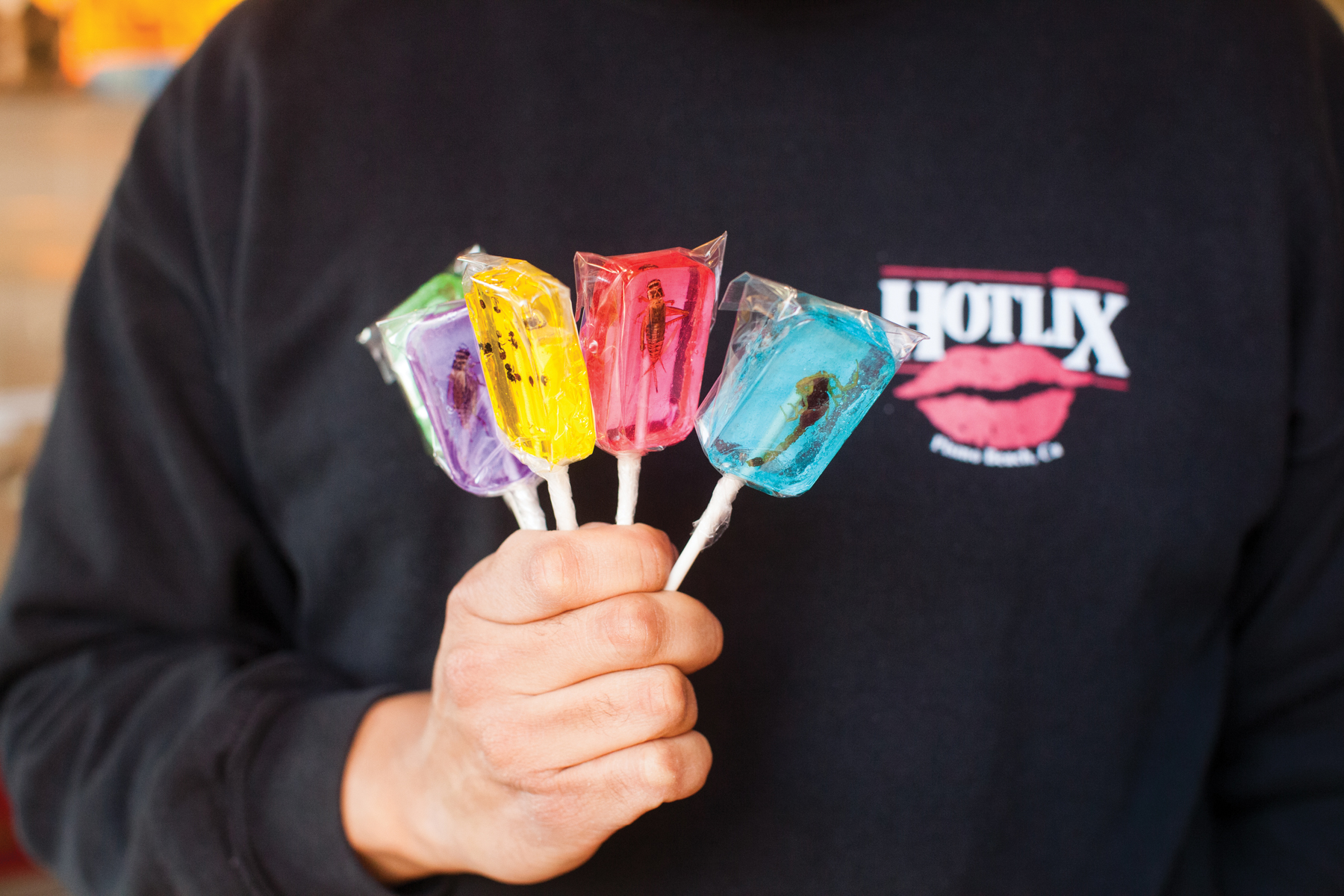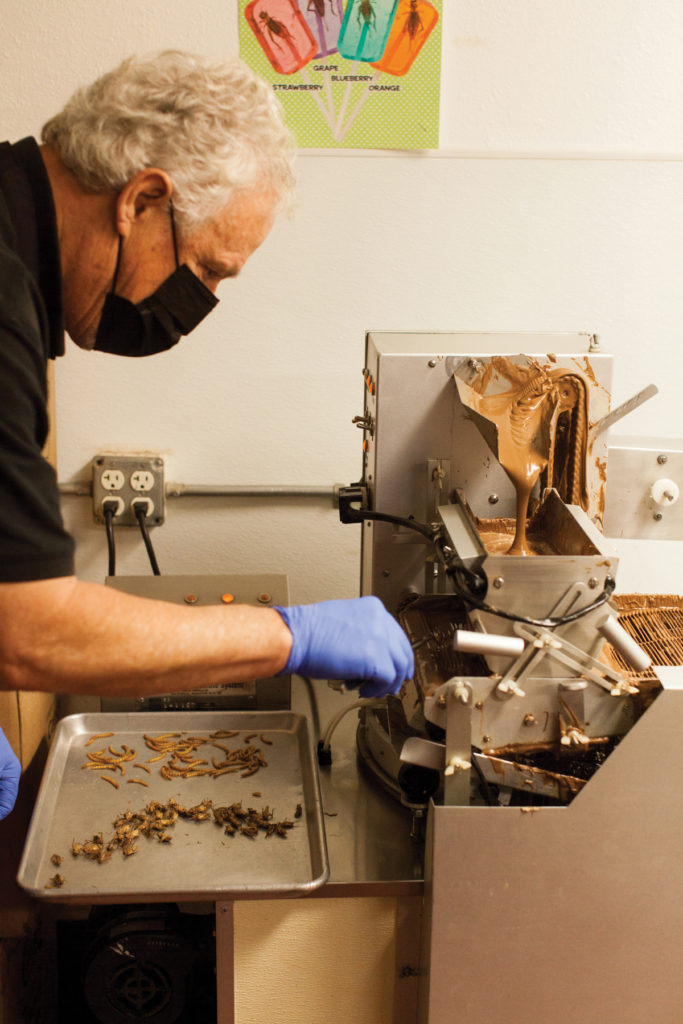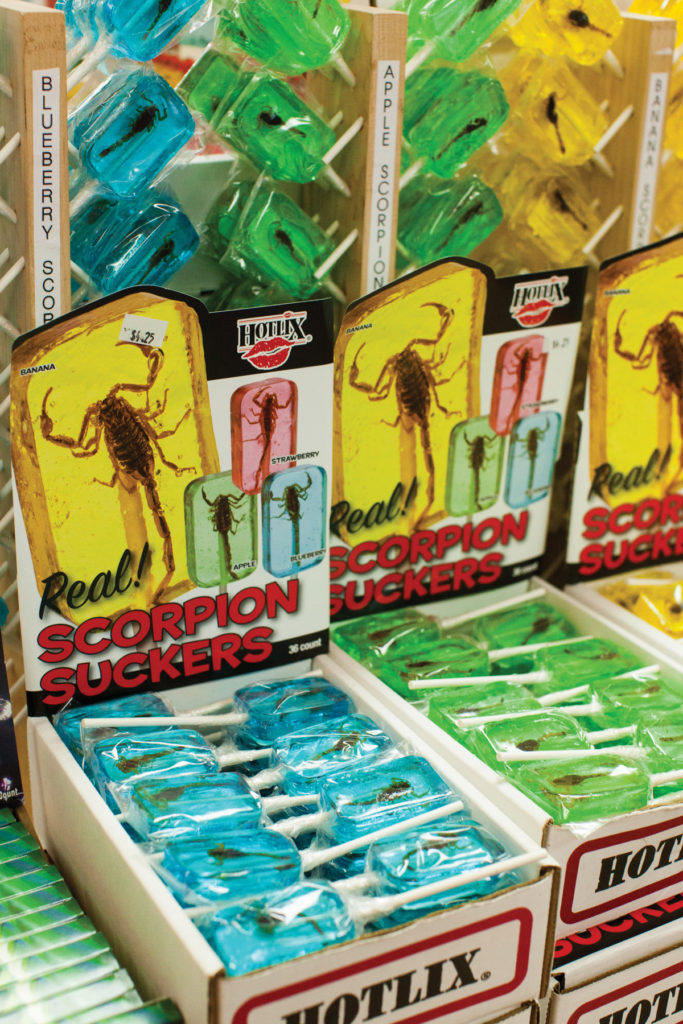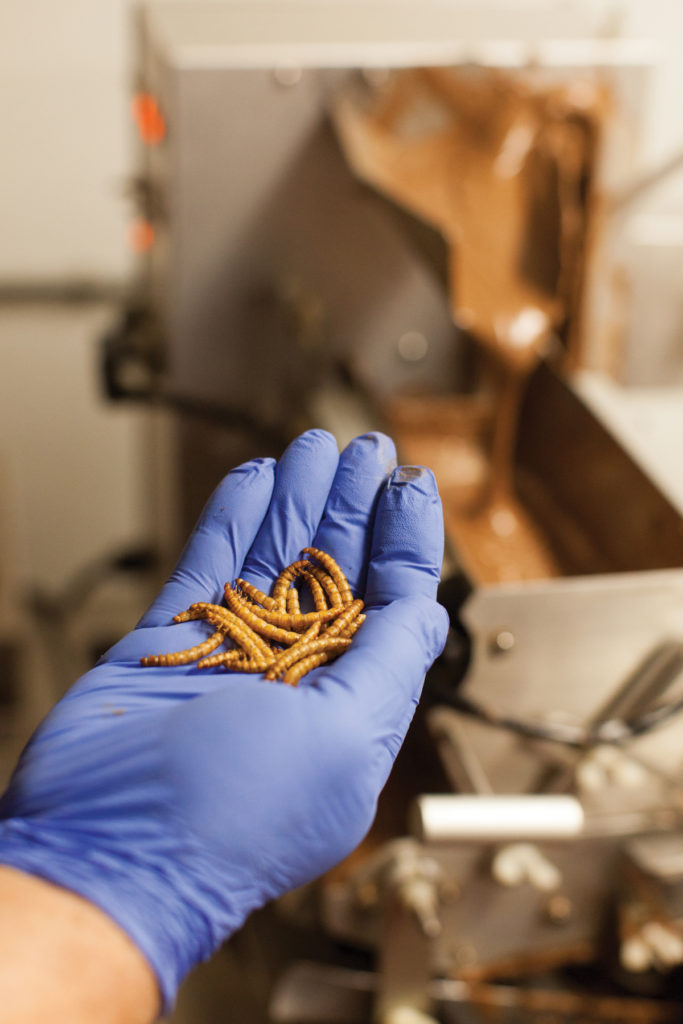
Bon Appétit: Bugs
Photography by Jennifer Olson
Don’t be alarmed, but the candy found for sale at Hotlix in Pismo Beach is teeming with insects. These bugs are no longer on the move because they’re actually encapsulated in various suckers and chocolates. This buggy boutique all started decades ago because of the owner’s interest in entomophagy — the practice of eating insects — and has since grown into an international phenomenon.
Larry Peterman bought the candy store in 1986 and about three years later began purposefully adding bugs to candy to create his signature insect suckers. Today, the 82-year-old still oversees the entire operation, which dates back to its origins as the senior project of Cal Poly business students. Larry says his shop got its start crafting lollipops from leftover candy apple syrup in more traditional flavors like butter rum, whiskey and tequila. He eventually decided to add a worm to the tequila pop, which is how the original tequila sucker began. The scorpion sucker reigns as the top seller, with the seasoned crickets coming in at a close second. “The worms and the crickets are great for snacking,” says Larry. “You can even put them on salads.”

Hotlix has faced some controversy over their products throughout the years, surprisingly for the concept of a “tequila” flavored sucker rather than the literal bug inside it. The business’ rise to fame began when in 1990 a photographer snapped a photo of a tequila flavored sucker and that photo ran in Newsweek. The phenomenon of bug lollipops soared in conversational popularity and the rest is history. “We were in any kind of magazine you could think of from Playboy, to EatingWell, to Motorhome magazine — everything,” says Larry.
When the bug business first started, Larry faced scrutiny from health departments and he says the U.S. Food and Drug Administration visited his store on several occasions. Nevada officials pulled his lollipops off the shelves of stores across the state and Canada wouldn’t allow import of his products. But he was always prepared to argue his case. Larry would refer anyone who questioned his practices to the Entomology Department at the Smithsonian, for which his team had provided bugs for various “insect dinners.” Even National Geographic once hosted a filmed dinner that Larry’s team prepared with different types of insects. “The attitude toward eating insects has really changed from the time we first started until now,” Larry reflects. “When I first started, most people didn’t think you could eat bugs. It wasn’t acceptable back then.” Now, shoppers can find them at county fairs, airports, museums and more.

“The hardest thing was letting people know what insects are edible without falling over and dying,” he remembers. While grotesque to some, the practice of eating insects is now championed by some environmentalists who herald findings that insect farming is far less environmentally damaging than other forms of protein production.
When it comes to eating bugs as protein, Larry cautions it’s not necessarily realistic to expect high nutritional value from insects unless they’re unprocessed. Though there are numerous countries in the world where insects are a valid source of protein for sustenance, these cultures often eat them raw.

But it’s true people around the world have been eating insects for thousands of years and the practice is commonplace in some areas. Globally, about 2,000 insect species are consumed in countries throughout Asia, South America and Africa, according to a study from the Laboratory of Entomology in the Netherlands. Visitors to Thailand can glimpse trays upon trays of bugs such as crisp, deep-fried grasshoppers sold at markets. In Japan, wasp larvae are eaten alive as a delicacy. “There’s a lot of work being done for using insects as sustainable food, but we’re mostly using it for fun,” Larry remarks. “But I think it’s important to be educated on the information surrounding this practice.”
Although Hotlix markets their bugs as a novelty snack, if more countries invested in insect cultivation as an agricultural practice, it could potentially alter forever the landscape of farming operations and impact global sustainability. Bug farming uses just a fraction of the land that crops or livestock production uses, and requires far less energy and water compared to traditional farming, not to mention there’s a significantly lower carbon footprint involved and less waste produced. For example, crickets need six times less feed than cattle, four times less than sheep and two times less than pigs, according to the Food and Agriculture Organization of the United Nations.

“It seems like the general population has gone from seeing eating bugs as an ‘ick’ factor, to the ‘acceptance’ factor,” says Larry. “Those kids we were selling to 30 years ago are now adults and they don’t have the aversion to letting their kid eat bugs because they ate bugs themselves when they were smaller!”
So, will we someday be using cricket flour instead of wheat flour or almond flour? There’s a likelihood that insects will show up in more places than as a surprise in our cereal boxes — and like Larry’s lollipops, the presence of bugs will actually be intentional.
For those who are interested in learning more about raising and using insects as food, Larry recommends a few books, based on his own study of entomophagy. He recommends reading Bugs In The System, Man Eating Bugs and Why Not Eat Insects (which dates back to the 1800s) as well as Edible Insects In Sustainable Food Systems, which discusses the sustainability factors of the practice.

